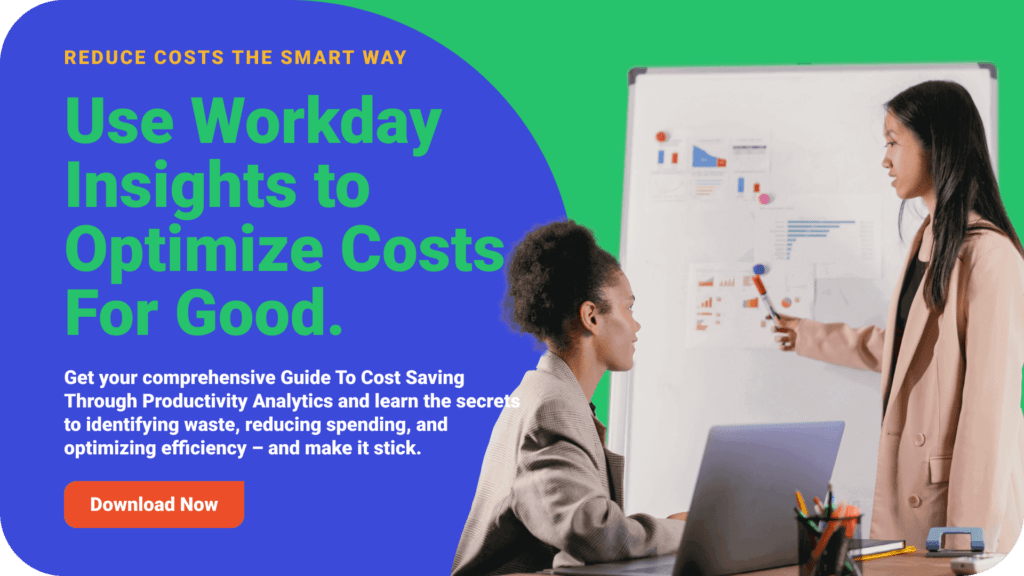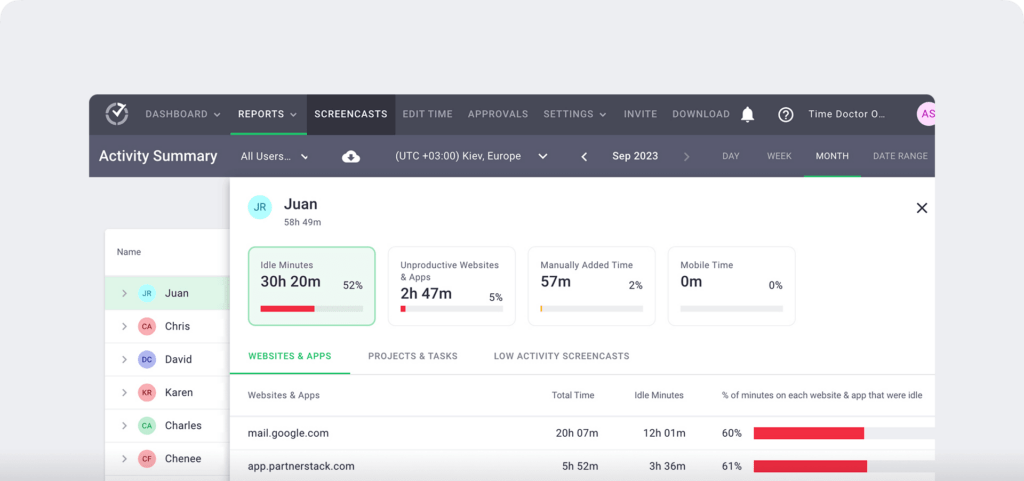Increasing productivity improves cost efficiency. The more productive your people are, and the more repeatable the processes underpinning that productivity, the more costs stay under control while revenue rises.
This is because ‘productivity’ is greater than the sum of its parts – those parts being broadly categorized into ‘people’ and ‘performance’.
| People | Performance |
| Employee engagement | Accurate organizational data |
| Silo-free communication | Data-driven decision making |
| Solid leadership | Streamlined process flows |
| Collaboration | Accountability and reward systems |
| Culture of continuous improvement | Regular reporting |
| Employee retention strategies | Investment in innovation |
McKinsey’s data demonstrates how a company that balances its focus equally on people and performance will consistently see a big payoff:
- 4.2x more likely to outperform competitors
- 5% lower attrition rate compared to organizations focused solely on performance
- Higher profits
- Greater return on invested capital
The organizational data you need to do this already exists. What’s missing are the tools to gather that data and the strategy to wield insights in the most productive way.

Accessing workday analytics and insights
One of the biggest challenges companies face, especially those playing catch-up with an unexpectedly remote workforce, is measuring productivity accurately. Productivity is more than output. It’s a complex combination of ingredients, primarily those listed above, with a sprinkling of organization-specific considerations.
Certainly that was the case for Empire Flippers, who needed a unique productivity data solution to help them manage a 100% remote team.
However, what’s universal across departments and organizations is the need for leaders, managers and employees to have visibility over the work being done. Without productivity data, collecting actionable insights and implementing strategic business changes is impossible.
How productivity and work analytics helps businesses
- Reduce inactive time by identifying employees spending too much time on non-productive activities, such as browsing the internet or taking unscheduled breaks.
- Reduce unproductive time by alerting managers to cost-ballooning activities like unnecessary meetings or tasks that take longer than they should.
- Reduce distractions by notifying employees and managers in real time when distractions are hurting productivity.
- Reduce time theft by tracking people who are clocking in but not working or working on personal activities during work hours.
But let’s pause here. All these reductions, while valuable, focus on performance only. Good managers will flip challenges on their heads to shake out the opportunity.
- Reduce inactive time becomes re-engage burnt-out employees.
- Reduce unproductive time becomes implement process improvements that alleviate unnecessary admin and meetings.
- Reduce distractions becomes leverage people’s strengths, skills and interests to optimize performance.
- Reduce time theft becomes encourage accountability and transparency among remote teams.
This is what is meant by managing people and performance simultaneously. And the process starts and ends with productivity analytics.
Every organization generates a wealth of data. It flows from daily operations, capturing nuances, revealing employee trends and holding the key to unlocking hidden potential. But here’s the catch: raw data is a cacophony of numbers until it’s distilled into intelligible insights.
That’s where workday analytics software shines. It’s the translator that takes an enormous number of disparate data points and molds them into a cohesive narrative of efficiency.

Time Doctor tracks workday activity with productivity in mind. As well as high-level metrics on the work being done day to day, Time Doctor provides individual and team-specific data. Leaders use the data to make cost-optimization decisions. Managers understand their team on a deeper level. Employees can self-correct time-wasting behavior and find ways to work smarter.
Request a demo now to experience it yourself.

Carlo Borja is the Content Marketing Manager of Time Doctor, a workforce analytics software for distributed teams. He is a remote work advocate, a father and a coffee junkie.


